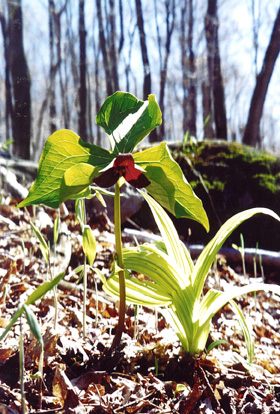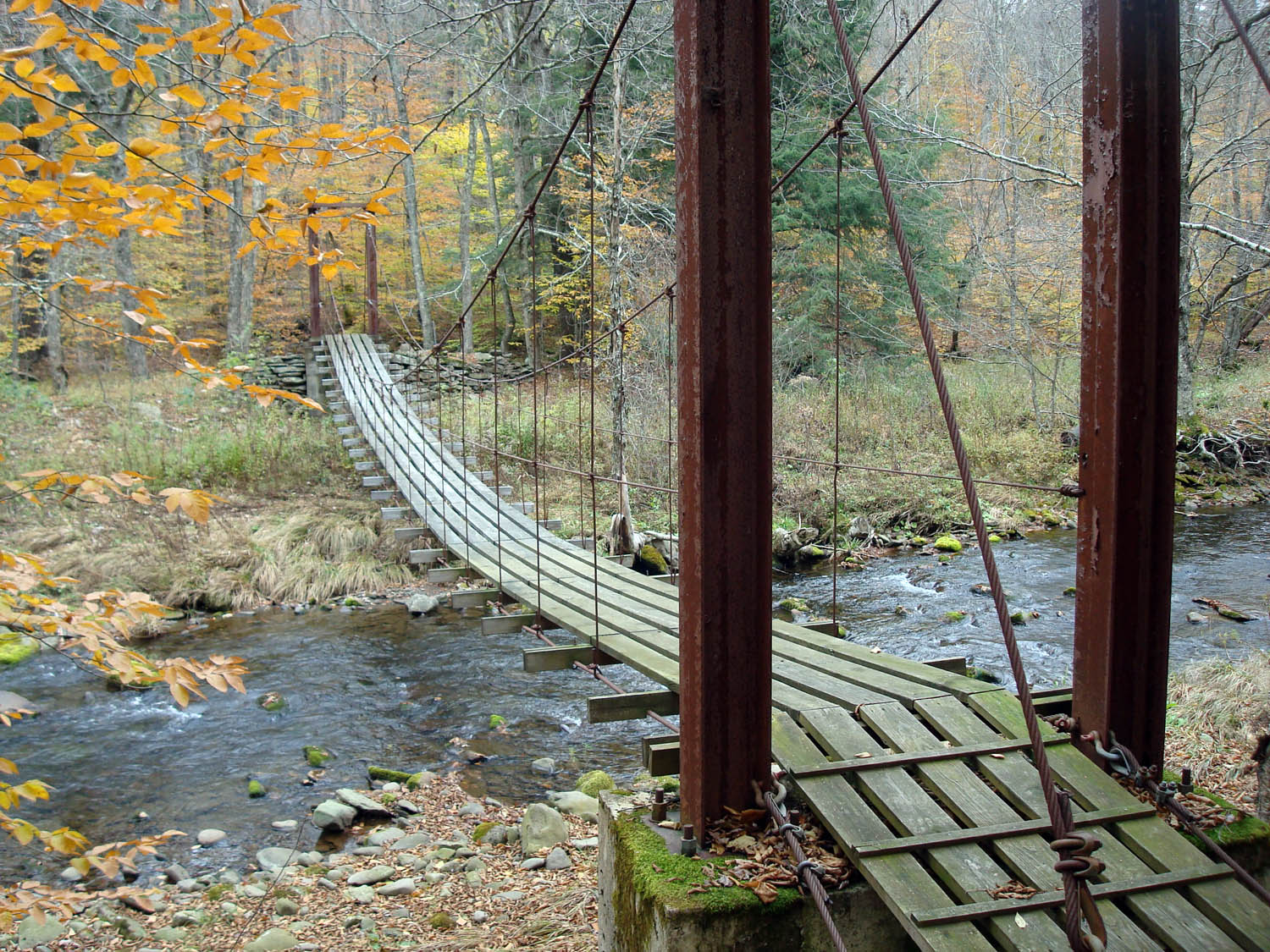
Normally the month of April, or “mud season,” as it is affectionately known, is relatively quiet in the high peaks region. The ski centers close down, many of the restaurant owners and innkeepers shut their doors for a few weeks to seek out warmer and drier weather, and Easter recess is a welcome reprieve for local teachers and students.
Residents in the Catskill Mountain region begin getting re-acquainted with the natural world this time of year as well. The longer days enable the chlorophyll to turn that brown grass green again, and the first buds and flowers (like red trillium) announce nature’s emergence from winter. People emerge too – raking leaves, picking up branches, planting flowers, and of course fishing for trout.
This time of year, everyone is focused on "green.” Today is Arbor Day, and Earth Day turned 40 years old last week. To celebrate Earth Day, the commissioner of our Department of Environmental Conservation (DEC) started a blog called “State of Green," to show residents just how “green” New York is.
 Harbinger of spring: Trillium erectum, the red trillium, is blooming now in the forest.
Harbinger of spring: Trillium erectum, the red trillium, is blooming now in the forest.
When New York talks about being green, it always seems to come back to championing for the drilling of natural gas in the Marcellus Shale. Sure enough, immediately off an Earth Day high, DEC Commissioner Pete Grannis announced that any natural gas drilling applications that will use high volume horizontal drilling (also known as hydrofracking) in the 1,800 square miles that comprise NYC’s Catskill/Delaware watershed would not be subject to the forthcoming regulations that the DEC will use to govern this industry.
The reason for this exception (which includes Syracuse’s watershed as well) is that about 9 million people receive their unfiltered drinking water from these sensitive areas.To me, this is an admission by the DEC that stricter regulations would be in the best interest of half of New York’s residents.
If this new policy doesn’t prove that the current one-size-fits-all ‘generic’ approach to regulating the environmental impact of gas drilling is inadequate, I cannot imagine what would.
Lucky for me, I live within the Catskill/Delaware Watershed, where a more thorough review will now be required.That's right, I feel lucky -- not because I care about the water that comes out of the faucet in Grand Central, but because I care about the quality of the water that comes out of my tap, which originates at my unfiltered surface water source, a spring out back in the woods. I also care about my father’s well, but he lives in this vicinity as well, so he’ll be okay.
My mother will be the unlucky one. She lives a stone’s throw from the Ashokan Reservoir, on the dry side of the Olivebridge Dam, just outside of this exempted area. Generic places: This bridge over the Beaverkill, like the Platte Clove waterfall pictured above, lies outside the NYC watershed.
Generic places: This bridge over the Beaverkill, like the Platte Clove waterfall pictured above, lies outside the NYC watershed.
Here are some other places now seen as ‘generic’ by the DEC: the Beaverkill, the Willowemoc, Platte Clove, Kaaterskill Clove, North / South Lake and many other places in the Catskill Park, including the homes of many who will read this column. More than 100 years ago, these places were deemed worthy enough for protection by the State Constitution. But they’re not important in the DEC’s eyes, as far as hydrofracking is concerned.
Fortunately, we live in a “home rule” state. You know - a state where local residents and town officials have the final say about what is important and relevant to their community and what isn’t.
Unfortunately, home rule doesn't apply to gas drilling. The “State of Green” will handle this one for us locals, though I have a feeling it is the other kind of “green” this state is interested in at the moment.
The high peaks of the Catskill Mountains are special, and not only because of New York City's water. I believe that gas drilling using hydrofracking poses a threat to our health and environment. The current regulations don't protect us, and the DEC should go back to the drawing board until they can guarantee our safety.
Aaron Bennett is the High Peaks regional director of Catskill Mountainkeeper. His column, View From The High Peaks, appears monthly in the Watershed Post.












